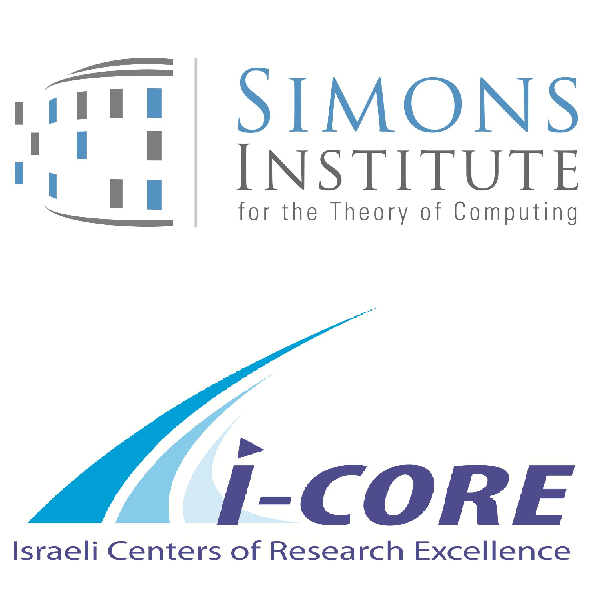In the d-dimensional bin packing problem (VBP), one is given vectors
x
1,x
2,
¼ ,x
n Î
Rd and the goal is to find
a partition into a minimum number of feasible sets: {1,2
¼ ,n} =
Èis B
i.
A set B
i is feasible if
åj Î
Bi x
j £ 1, where
1 denotes the all 1
¢s vector. For online VBP,
it has been
outstanding for almost 20 years
to clarify the gap between the best lower bound
W(1) on the competitive ratio
versus the best upper bound of O(d).
We settle this by describing a
W(d
1-e
) lower bound.
We also give strong lower bounds (of W(d(1)/(B)-e
|
) ) if the bin size B Î Z+
is allowed to grow. Finally, we discuss almost-matching upper bound results for general values of B;
we show an upper bound whose exponent is additively ``shifted by 1" from the lower bound exponent.
The Loss of Serving in The Dark
Yossi Azar, Ilan R. Cohen, Iftach
Gamzu
STOC 13 ACM
Symposium on the Theory of Computing
We study the following balls and bins stochastic process: There is
a buffer with B bins, and there is a stream of balls X =
á X1, X2, ¼ ,XT ñ such that Xi is the
number of balls that arrive before time i but after time i-1.
Once a ball arrives, it is stored in one of the unoccupied bins.
If all the bins are occupied then the ball is thrown away. In each
time step, we select a bin uniformly at random, clear it, and gain
its content. Once the stream of balls ends, all the remaining
balls in the buffer are cleared and added to our gain. We are
interested in analyzing the expected gain of this randomized
process with respect to that of an optimal gain-maximizing
strategy, which gets the same online stream of balls, and clears a
ball from a bin, if exists, at any step. We name this gain ratio
the loss of serving in the dark.
In this paper, we determine the exact loss of serving in the dark.
We prove that the expected gain of the randomized process is worse
by a factor of r + e from that of the optimal
gain-maximizing strategy for any e > 0, where r =
maxa > 1 a ea
|
/((a-1)ea
|
+ e - 1)
» 1.69996 and B = W (1/e3). We also
demonstrate that this bound is essentially tight as there are
specific ball streams for which the above-mentioned gain ratio
tends to r. Our stochastic process occurs naturally in many
applications. We present a prompt and truthful mechanism for bounded capacity auctions,
and an application relating to packets scheduling.
Education & Academic Positions
Bar Ilan University
2020 - Present
Faculty Member
Jether Energy
2019 - Present
Researcher
CWI, Amsterdam
2018 - 2019
Postdoctoral Fellow
Carnegie Mellon University &
University of Pittsburgh
2017 - 2018
Postdoctoral Fellow
Simons Institute and I-CORE
2016 - 2017
Postdoctoral Fellow
Tel Aviv University
2011 - 2016
Ph.D. in Computer Science
Tel Aviv University
2008 - 2010
M.Sc. in Computer Science
Technion
2001 - 2004
B.Sc. in Computer Science
Miscellaneous
Awards
Fulbright Post-doctoral Scholar Fellowship
2017
Jorge Deutsch Prize for excellence in PhD studies
2016
The Gutwirth foundation scholarships
2015
Teaching
Lecturer in Introduction to Game Theory at Bar-Ilan University
2022-Present
Lecturer in Stochastic Models in Operation Research at Bar-Ilan University
2022-Present
Lecturer in Electronic Commerce Models at Bar-Ilan University
2023-Present
Teaching Assistant in Algorithms at Tel Aviv University
2013-2016
Programming Skills
C++, C#, Java, Matlab
Advanced Skills
| 








